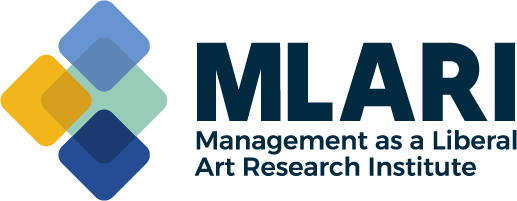The Drucker Difference
PUBLISHED:
The Executive PhD program that Peter Drucker, “the Father of Modern Management,” and his dean, Paul Albrecht, developed at Claremont Graduate University in 1975 was the first accredited PhD intended for future top executives. According to Albrecht, this PhD taught the “Drucker Difference” for those “with top management potential.” It was and is expensive.
There were only ten students in the first cohort, and only one of the ten completed the program. This individual eventually rose to the rank of major general in the U.S. Air Force, and, after retirement, founded The California Institute of Advanced Management with Minglo Shao, a Chinese billionaire who had earlier founded Drucker Academies across China. Others graduated in later cohorts and became senior corporate executives, presidents of colleges and universities, and entrepreneurs.
Was Drucker Really Different?
Most professors built their careers on conventional research and publication in academic journals. Drucker didn’t. His numerous articles were written for practitioners, not primarily researchers. They appeared in the Harvard Business Review, the Wall Street Journal and other journals read primarily by practitioners. In June 2004, Harvard Business Review honored Drucker with his seventh McKinsey Award for his article, "What Makes an Effective Executive.
Drucker’s 39 books were written for practitioners as well. They won and received numerous accolades. Yet Drucker did not write synthetic research typical in academia, where one or more hypotheses based on multiple inputs are tested for significant differences.
Drucker used a different research model. He declared, “corporations are my laboratories.” His conclusions from observation are the basis of the Drucker Difference. They were explained first by Einstein who used the method and explained it in an article in the London Times.
Drucker’s Research Model
Asked in class where he got his vast knowledge and extensive experience to help organizations in so many different industries, Drucker answered: “I have no vast knowledge nor extensive experience on any specific topic. I have only ignorance and lack of experience. Therefore, all I can do is to ask questions. Clients have the knowledge and experience which I lack; they are the real experts on the topics they hire me for.”
He then gave examples of his questions, beginning with “What business are you in?” “Who is your customer” “What does your customer value? “What are your objectives” and “What is your plan for getting those results?”
Other Questions
General Electric’s former CEO Jack Welch, who retired with the largest retirement package ever awarded, significantly increased GE’s wealth. He credited Drucker’s consulting. Welch said that Drucker had asked him two questions: “If you have a choice, which GE businesses would you discard?” and “If this is true, what are you going to do about it?”
Welch explained that he made the decision to sell or liquidate even profitable GE businesses, which were not number one or two in their markets and were unlikely to attain these positions. He used the funds to invest in businesses with better potential. Over nine years this increased GE’s wealth by 4000 percent. This became known as Drucker’s Abandonment Theory.
Another former client explained: “Drucker got us thinking through our problems and applying our own knowledge and experience in a way we had never considered previously. This was amazingly effective, and we found solutions to our problems with his guidance that we had overlooked.”
Drucker was Different
Here was an expert who not only did not claim special talents but rejected the title “guru.” Drucker made no claim as being an extraordinary management researcher. When not at the university, Drucker used his home as his office. He practiced without a staff or even a secretary. He even answered his own phone. He did not claim any special expertise or experience. Yet he reportedly received as much as $10,000 for a few hours work. Few complained. He taught a simple procedure to students. It began with defining the problem and determining the relevant factors including facts, estimates, speculations, assumptions, time available and financial limitations. Only then did he advise clients to identify, discuss, compare, and analyze possible solutions.
Strategy, not Formulae
Drucker refused to develop strategy by formula. There was no BCG nor GE/McKinsey chart with cash cows or dogs. He believed that each situation was so unique, that a manager must know as much as possible to determine strategy. There was no common element of identical importance for all situations. What was decisive and important in one situation might be totally unimportant in another.
Decisive elements might not even be quantitative or directly associated with profit. While profitability was deemed as necessary to a business as oxygen to breathing, he said that profit maximization was not, and noted that transistor radios were developed in the U.S., but lost the market to the Japanese because American developers tried to maximize profit. Drucker described management as a liberal art and suggested that liberal arts should be employed in developing strategies and management decisions. He noted economics, ethics, history, humanities, philosophy, social science, physical sciences, and psychology, as all being useful in a variety of managerial and business situations. He noted that in addition to external knowledge, self-knowledge of the organization and its people and available resources might be of even greater importance.
Drucker also wrote that 50% of the outcome of any project was due to its leadership. Once invited by an organization to explain the latest leadership techniques, he rejected the opportunity with the explanation that the latest techniques were known to the ancients and recommended that his inquirer read “the first systematic book on leadership and still the best” which had been written 2000 years earlier by Xenophon, an ancient Grecian general and author.
Drucker and Research
Most controversial was Drucker’s approach to research, yet it was also employed by Einstein who’d been a researcher in theoretical physics.
In the single year, 1905, Einstein produced four papers, winning the Nobel Prize for theoretical physics. All four were written a year after earning his PhD at the University of Zurich while he was working at the only job he could obtain: as Assistant Patent Examiner in the Swiss Patent Office in Bern. Like Drucker, he had no conventional laboratory or computers.
The Theory of Relativity
Einstein himself described the development of one of his most famous theories, the Theory of Relativity. He imagined himself traveling along side of a moving beam of light. Einstein may have provided Drucker with ideas of research. Drucker observed people in companies in action as Einstein had observed his imaginary beam of light. He used analysis and development of what he observed to develop his theories of management.
Einstein Reveals His Research Methodology
Einstein described his research methodology in an article in the London Times in 1919, discussing what he called his “Theories of Principle.” Einstein wrote “these theories employ the analytical, not the synthetic method of research. Their starting-point and foundation are not hypothetical components, but empirically observed general properties of phenomena, principles from which mathematical formulae are deduced of such a kind that they apply to every case which presents itself.”
Synthetic research is what most use in research. It starts with the known and proceeds to the unknown, beginning with a hypothesis or hypotheses. It then tests these hypotheses by proving or disproving each usually by examination of a sufficient number of examples and testing mathematically for significant differences. Einstein’s analytical research starts with the unknown and proceeds to the known. There is no hypothesis. One definition of analytical research is “a specific type of research that involves critical thinking skills and the evaluation of facts and information relative to the research being conducted.” This analytical process is how Drucker arrived at his theories and is part of the Drucker difference.
This research approach comes from a simple model:
1. Observation, either real or even imagined
2. Analysis of the observation or imagination
3. Construction of theory based on this analysis
A sampling of Drucker’s theories derived analytically include:
· That marketing and selling are not the same.
· Moreover, selling is not a subset of marketing and marketing and selling could be adversarial. Since, if the product or strategy chosen by the company were better, with the same effort and ability, the same salesmen might sell more product with less effort.
· What everyone knows (or think they know) is usually wrong. This short statement was the one most uttered by Drucker in the classroom.
· Social Responsibility and Ethics are part of good leadership.
· Society demands that an organization be profitable, but not the maximum profit attainable.
· Many managerial decisions are made from the gut, and these may be optimal despite complex analyses.
· Managers must ultimately make decisions from the gut.
What Drucker taught, worked, and the “Drucker Difference” produced many successful leaders using “Drucker Difference” skills. While other factors influence results and other research methods are still valuable, researchers using primary analytical research including Einstein confirm the value of the “Drucker Difference” confirming Drucker’s conclusion that Management is a Liberal Art.





